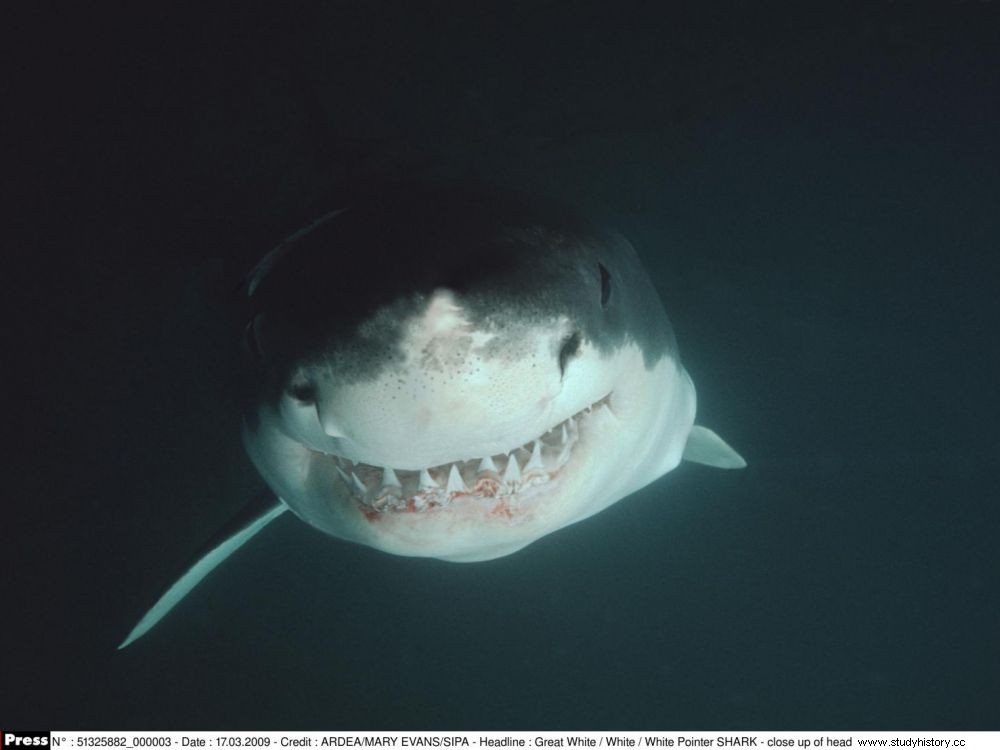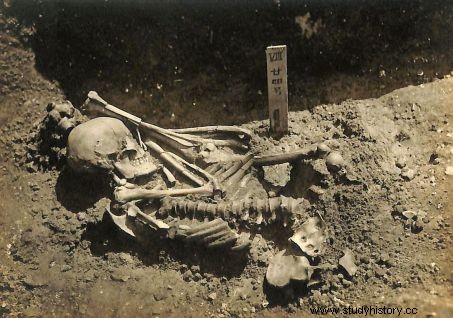The tragedy occurred in the Seto Sea, in Japan, and the victim was probably a fisherman:more than 790 injuries were recorded on his body.

The great white shark is possibly responsible for this 3000 year old attack.
He was buried between between 1370 and 1010 BC in the cemetery of Tsukumo. It is a place located 3 km from the city of Kasaoka, established on the edge of the Seto Inland Sea, which separates Honshū, Shikoku and Kyūshū, three of the four main islands of Japan. Three millennia later, the skeleton of the individual - baptized No. 24 - was subsequently exhumed and transported to Kyoto University where it was examined by two researchers from the University of Oxford. Their analyzes reveal a terrifying story...
Large number of injuries caused by a shark
The scientists who examined the remains of the body are working on the traces of violent trauma present on the remains of hunter-gatherer skeletons. And the least we can say is that the end of individual no. 24 was particularly violent:more than 790 injuries were recorded on his body. Mainly on the arms, one leg, the torso and the abdomen. The other leg was not found as well as the left hand which was sheared off.

The skeleton of individual #24. Credit:Kyoto University.
To explain what had happened to him, the investigators listed the list of predators or scavengers that could have caused so much damage. Their suspicions quickly turned to sharks, but given the rarity of archaeological cases of attacks, they had to seek the support of an expert specializing in modern shark attacks. The reconstruction of the wounds and their appearance then made it possible to affirm that the culprit was indeed a shark. Probably a tiger shark or a great white.
Attacked alive, in front of his fishing buddies
The victim was probably alive at the time of the attack as revealed by the authors in an article published in the journal Journal of Archaeological Science:Reports . He does indeed show signs of defensive wounds. The man was probably fishing at the time of his fatal encounter, the Jōmon people he came from being known to exploit marine resources extensively. The fact that his body may have been recovered and buried suggests that he had companions who witnessed his death. Nowadays, shark attacks are still recorded in this area.
